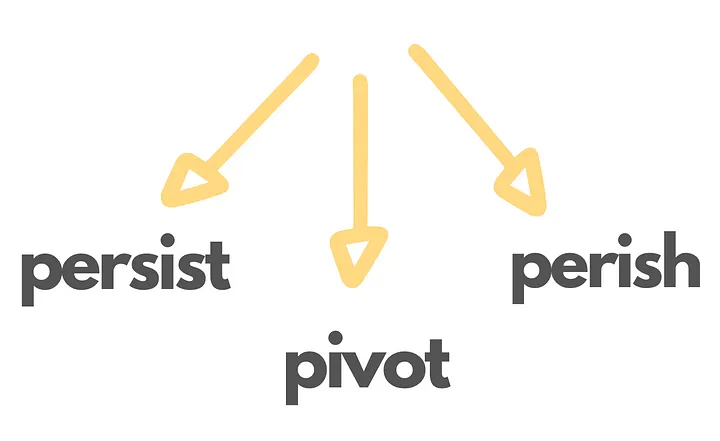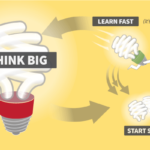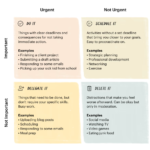How many times have you heard “work smarter, not harder”?
For many startups, there is no other option. With constrained money, time, and resources… they must find a smart way to operate and quickly.

With the Lean Startup Methodology, product development begins with a simple hypothesis, and in a series of steps, transforms into a customer-focused business model.
Hypothesis-driven product development protects against founder cognitive bias, and helps a startup ensure that they’re building a product or service that people will actually want and use when it is time to go to market.
More simply put, the scientific method ensures that as a startup grows its solution, it stays grounded in the problem or progress that a consumer wants to solve or make by “hiring” or buying the product.
Build
The build phase typically begins with a lean business model canvas, moves into customer interviews, and ends with the formation of an MVP.
The Lean Canvas
The lean canvas is a working document throughout the lifetime of a product. It’s a business model that fits on a page, and typically looks like this:

The lean canvas is built out of a founder’s initial understanding of the problem at hand, and some deeper-level thinking on how they envision the business coming together. The key aspects are:
Problem — what is the problem you see and would like to solve
Solution — what is the product you envision solving the problem
Unique Value Proposition — what does the product introduce into the market
Unfair Advantage — what protects your idea from being easily copied
Customer Segments — who is the product going to serve
Channels — how will you get your product to your users
Key Metrics — how will you measure success of the venture
Cost Structure — what do you need to spend to build your business
Revenue Streams — how will you make money
Once the lean canvas is built, customer interviews begin. Entrepreneurs need to understand what leads their customers to purchase, what products they’re competing against, and in what form they should deliver their product.
Interviews
Jobs To Be Done: JTBD is an interview style that focuses on what leads a customer to “hire” (purchase) a product or service. I won’t explain the process in depth here, but you can learn more from these sources:
Harvard Business Review, Clayton Christensen: Competing Against Luck, or listen to an example with explanations: Mattress Interview.
5Y: The 5 Whys is another form of customer interviews, and is quite simple to understand. The goal of 5 Whys is to drill down to the root of a problem or action quickly.

Essentially, when a customer explains a problem or an action, you respond with “oh, and why was that?”, let them explain, and do it over again 4 more times. This gets to the root of why something happened, and can inform a founder about what problem their product should really be aiming to solve.
MVP
Once the initial lean canvas has been built, and the startup team has identified what problem customers need solved, they build an MVP.

A Minimum Viable Product is the most rudimentary form of a product that can be tested by early-adopters. An MVP can take many forms, but the key is that it offers a cost-efficient and early version of the envisioned end-product.
Measure
Instead of looking at demographic information to understand who buys what, like many larger corporations do, entrepreneurs must understand WHY someone buys something.
To measure, entrepreneurs go through MVP testing. They test various hypotheses about consumer desires and market-fit by showing an early version of the product to consumers and measuring responses.
MVP testing allows startups to move from customer discovery to customer validation, and determine if changes need to be made to the business.

There are endless examples for different startups, but we’ll focus on Rent The Runway(read more about this from Harvard Business Review here):
Rent The Runway is a fully operational service where customers can rent designer clothing for general wear or special events, and then return them when they’re finished. This offers high-end clothing to normal individuals for a fraction of the cost, and minimizes waste.
Rent The Runway’s MVP took form through a series of in-person trunk shows, where they had a small collection of clothing, and allowed women to view and try on the clothes. Once the women chose what they liked, they could rent and eventually return the item.
Notice that, although Rent The Runway now operates out of storefronts and online, and offers a large selection of items, their MVP was a much smaller and controlled offering. There was no website, no app, no storefront, and no warehouse full of clothing. Instead, there were a few individuals moving from location to location testing consumer responses to an early and simplified version of their product.
With MVP testing, entrepreneurs can test their hypotheses about consumer-market-fit without wasting time, money, and energy on building out a full solution. MVP testing lowers risk of the venture by collecting data on market fit in a timely and cost-efficient manner.
In the Rent The Runway example, validation from their trunk show that women did want to rent dresses and clothing allowed them to move on to a more built-out and expensive version of their product.
The initial hypothesis validation allowed them to test their product without spending gobs of money, and made sure that they could proceed in product development in a smart and experientially-informed matter.
Learn

The learnings gathered from the “measure” phase allow startups to make a choice: persist, pivot, or perish.
Persist
If all initial hypotheses were validated in the first round of MVP testing, then a startup will choose to continue in their originally chosen path.
Of course, the startup hasn’t “made it” just yet, and will likely need to go through the build-measure-learn phase several more times as their business and product becomes more sophisticated.
Pivot
If some initial hypotheses were invalidated, then the startup knows they need to go back and reconsider some of their conceptions about the market.
Because they chose the lean startup approach, they are nimble and can more easily pivot to an altered business model or new product. They saved themselves time and money by testing an early form of their initial idea, and realizing early that it would not work as they had hoped.
Now, they can jump back up to the drawing-board with the “build” phase, smarter because of their experience.
Perish
Sometimes, things just weren’t meant to be. If the initial idea tested in the MVP was too much of a flop, and the founder doesn’t know how to pivot the business or product, or the company has run out of time or money, they may choose to perish.
The hope is that most startups can avoid this, but some choose to close their doors for the time being, and pursue a new idea down the road.
Recap
- Work smarter, not harder
- Build → build your lean canvas, interview customers, build your MVP
- Measure → test your MVP, validate or invalidate your hypothesis, collect data
- Learn → persist, pivot, or perish



I enjoyed the humor in this piece! For more, visit: FIND OUT MORE. Let’s chat about it!
Great!!! Thank you for sharing this details. If you need some information about Airport Transfer than have a look here 59N
Amazing Content! If you need some details about about SEO than have a look here Article Home
Can you be more specific about the content of your article? After reading it, I still have some doubts. Hope you can help me.
Thanks for sharing. I read many of your blog posts, cool, your blog is very good.
Your point of view caught my eye and was very interesting. Thanks. I have a question for you. https://accounts.binance.com/ru/register-person?ref=V3MG69RO
Can you be more specific about the content of your article? After reading it, I still have some doubts. Hope you can help me.
Thanks for sharing. I read many of your blog posts, cool, your blog is very good.
As someone still navigating this field, I find your posts really helpful. My site is FQ6 and I’d be happy to have some experts about Thai-Massage like you check it and provide some feedback.
I don’t think the title of your article matches the content lol. Just kidding, mainly because I had some doubts after reading the article.
Can you be more specific about the content of your article? After reading it, I still have some doubts. Hope you can help me.
Thanks for sharing. I read many of your blog posts, cool, your blog is very good.
Your article helped me a lot, is there any more related content? Thanks!
I don’t think the title of your article matches the content lol. Just kidding, mainly because I had some doubts after reading the article.
Thank you for your sharing. I am worried that I lack creative ideas. It is your article that makes me full of hope. Thank you. But, I have a question, can you help me?
Your point of view caught my eye and was very interesting. Thanks. I have a question for you.
Thanks for sharing. I read many of your blog posts, cool, your blog is very good.
Can you be more specific about the content of your article? After reading it, I still have some doubts. Hope you can help me.
Thank you for your sharing. I am worried that I lack creative ideas. It is your article that makes me full of hope. Thank you. But, I have a question, can you help me?
I don’t think the title of your article matches the content lol. Just kidding, mainly because I had some doubts after reading the article.
Thanks for sharing. I read many of your blog posts, cool, your blog is very good.
I don’t think the title of your article matches the content lol. Just kidding, mainly because I had some doubts after reading the article.
Your point of view caught my eye and was very interesting. Thanks. I have a question for you.
Thank you for your sharing. I am worried that I lack creative ideas. It is your article that makes me full of hope. Thank you. But, I have a question, can you help me?
Can you be more specific about the content of your article? After reading it, I still have some doubts. Hope you can help me.
Your article helped me a lot, is there any more related content? Thanks!
Thank you for your sharing. I am worried that I lack creative ideas. It is your article that makes me full of hope. Thank you. But, I have a question, can you help me?
Thank you for your sharing. I am worried that I lack creative ideas. It is your article that makes me full of hope. Thank you. But, I have a question, can you help me?